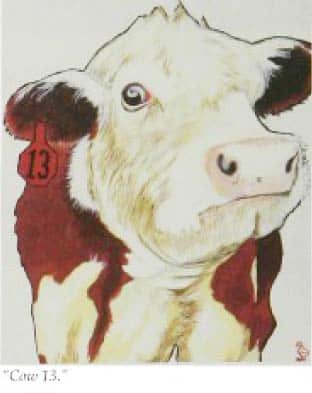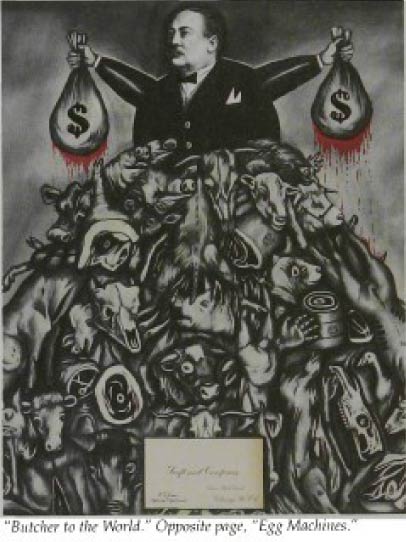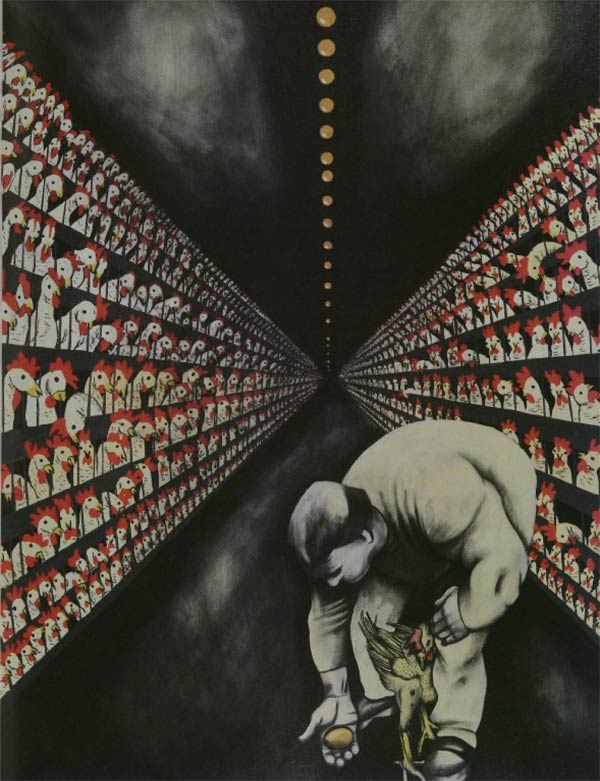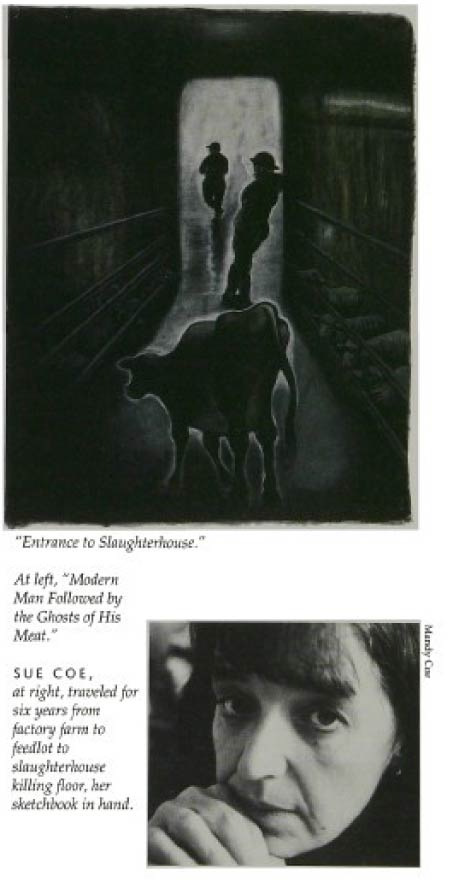by Sue Coe
Six billion animals are killed each year in the United States for human consumption. The suffering of these animals is mute. For the defenseless, the gentle, the wounded, the ones who cannot speak, life consists of indescribable suffering. – SUE COE, IN DEAD MEAT

WHEN WE LOOK AT A COW’S FACE, ARE WE LOOKING into the face of God? A creature without an ego or a sense of self? When a calf is born, the mother nuzzles the wet calf, the calf is taken away. The mother’s milk, intended for the calf, goes to us.
An egg factory is a long, bunker-type building. The hens can’t stretch their wings, turn around, or lie down. On slaughter day the hens are in total dread and terror. They make terrible screeching sounds. By the time the hens get to the slaughterhouse, 80 percent of their bones have been broken. The bones are very brittle, as all calcium goes to the eggs.
At the back of every stockyard is the dead pile, an enclosed area where animals that died in transit are dumped. If left on the dead pile, an animal will go into our hamburgers, via the Tenderers.
In the early 20th century, when Upton Sinclair wrote The Jungle, packing houses were very proud of their slaughtering techniques and would offer guided tours for the public to show off the new technology. By the end of the 20th century, that is no longer the case. The public is not welcome. Slaughterhouses, especially the larger ones, are guarded like military compounds, and it is almost impossible to gain access.

I usually got in by knowing someone, who knew someone else, who had a business relationship with the plant or slaughterhouse. There were times when I made an official appointment months in advance, only to arrive and be denied admission. The use of a camera was usually forbidden, and video cameras were out of the question. A sketchbook, however, was usually considered harmless.
In one case the owner threatened to kill me if I ever published the name of the slaughterhouse. There were a few slaughterhouse bosses and producers of meat who went out of their way to be helpful and paid me every courtesy. They understood the contradictions of what they were doing and were willing to reveal the concealed industry and open up the debate.
I asked one boss, “Are the workers upset by all the killing?” The boss said, “These workers see so much animal blood, they don’t care, but if one man cuts his little finger, they all go crazy.”


